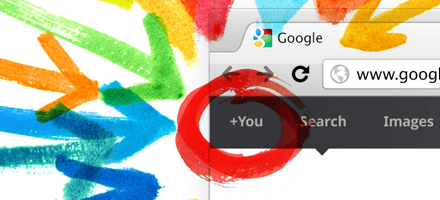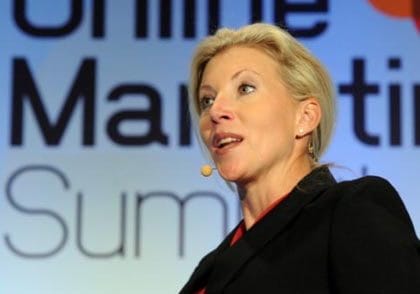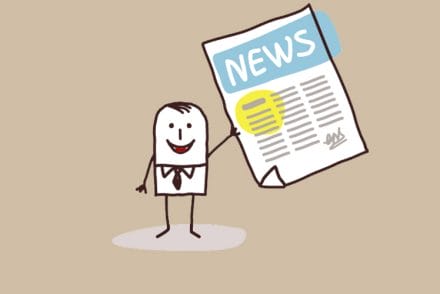As I am writing the Facebook IPO opens for trading in about twenty minutes. I, like the rest of the world, am thinking about how Facebook has changed everything. Whether you’re a regular Joe hooking up with ex-girlfriends from high school, a blogger building her network, or a company still pulling their hair out trying to understand the whole thing. It has changed us in a short span of six years (considering when membership was opened to the public in 2006, not its original founding). Investors, media and industry talking heads will banter all day about whether or not Facebook will continue to grow ad dollars and stay relevant to the members this whole thing depends upon (us!). It is after all the biggest U.S. company IPO in history. It’s a big deal.
As a marketer, it’s not. I’m not concerned with whether or not the stock closes at $40 today. I’m thinking about how Facebook has already innovated the way people experience my brands online and the long term impact it will continue to drive. We are constantly asking the question “What’s the ROI of a Facebook fan.” Well, for Facebook to deliver on the promise sealed in its 104 billion dollar valuation (I hear the voice of Dr. Evil as I write that) it will need to make approximately $20 in advertising off of every single member. Good luck getting my mom to click. For companies, valuations come in the form of fans. What’s the value of a fan? There are vague studies such as one from eMarketer about a year ago that determined a price tag of $136 per head. Or, we can consider how Facebook fans purchase x% more than other customers. That Facebook fans are worth thousands times more than a single advertisement because they spread the word exponentially increasing impressions. While even I have found myself quoting these statistics in front of corporate executives, it doesn’t really mean anything at the end of the day. These stats rarely reflect our own businesses. We have to forge our own trail.
To understand the value that Facebook brings to a brand and a brand’s audience we must understand two things.
1. Our audience, not their demographics and numbers, we need to understand them psychologically.
2. The science behind the Like button. e.g. How the Facebook core platform really works and why business pages and advertising are just scraping the surface.
Since I already brought up mom, let’s start there.
What’s the ROI of Your Mother?
…Famously said by Gary Vaynerchuk in rebuttal to the ROI question. Not because we social marketing strategists are dodging the question. It’s real talk. Here’s the concept:
Joe has been wearing wrinkled shirts to work. A co-worker posts a photo of Joe with other well-dressed guys in the office and he realizes his problem. He leaves a comment on the photo “Wrinkles! LOL. Time to buy an iron.” He figures he’ll pick up the cheapest iron he can find on the way home tonight. Since mom is friends with Joe on Facebook, Joe obviously hasn’t adjusted his privacy settings, she sees the comment come through her news stream and she goes full mom mode on it. Mom comments back, “Joe you need one with good steam. Don’t buy the cheap ones they will rust, leak and ruin your shirts. The only one that I would buy again is the Sunbeam 150. You can get it at Target.” Four people Like mom’s post in agreement. And, this is what Joe buys.
Now I know you guys are thinking “I’d just send them to the dry cleaner.” Sure, but that’s not the point. The point is people discover and make purchasing decisions through discussions. Whether the discussion happens over the phone, over coffee or online, it doesn’t matter. What Facebook has done is revolutionize the online discussion. That matters.
The ability to measure the scenario I just described goes back to “What’s the ROI of your mom?” It’s next to impossible for marketers to accomplish using today’s analytics. The tools to track a random discussion to purchase have never existed offline. And, in the midst of the social media revolution they are just beginning to evolve. Social media adoption is happening faster than marketing technology, and ideology, can keep up with. For lack of hard data it will take a little bit of faith and understanding of human nature to “get” why encouraging conversations around your brand is valuable to your business. There are good social media metrics you can start with to come closer to an understanding such as loyalty or lifetime customer value of fans vs. non-fans and share of conversation.
The Science Behind the Like Button
The invention of the Like button is the most revolutionary thing to happen to the Internet since Google search. Yes, I said it and that’s how strongly I feel about it. Google knows it too and this is why they’ve come to terms with the social web by creating their own social network, Google+. Prior to Google+ they had begun amending search results with meta data from people in your network. Here’s the value to marketers; when people associate people they know with a product, company or service it builds “social credibility”. This concept is the foundation of Facebook’s sponsored stories which are advertisements that show up in your side bar telling you that your friend just liked or commented on a brand’s content. It doesn’t appear to be an ad, it doesn’t scream buy this now, but people click it out of curiosity. The advertising industry calls this “earned media”. We humans call it “Look what my friend is doing.”
The Like button is simple. It associates people with actions and objects. Beyond Facebook business pages, there are several ways the Like button create and uses these associations.
Like Companies and Brands:
Clicking Like subscribes you to an entity’s page, or become a “fan” so to speak. This is the most common application of Facebook marketing for brands, organizations and celebrities.
Like Things to Do and Stuff:
When you specify that you like “running” in your profile, Facebook associates this with a Wikipedia page. You can like these pages but you cannot comment on them. These are simply used to build your profile up with personal information, make network associations and provide segmentation for advertisers. Facebook describes them as “arbitrary actions and objects”. If you want to target ads to people who enjoy running, done deal. If you want to see what your friends are doing who also like running, there you go.
Like a Place:
Facebook has business listings similar to the phone book or Yelp. A business does not have a choice in this matter, but it can be combined with their business page if they elect to. People who Like a place are displaying a preference, and when combined with a business page will also become a fan subscriber. Places are most commonly used to tag locations on status updates and images. A venue can benefit from Places by getting recognition and possibly gaining more Likes on their business page each time sometime tags a photo or checks in.
Like Stuff Posted to Facebook:
If you use Facebook you will be familiar with this. It’s hard not to do. Simply clicking Like on a photo, video, status update from a friend or brand takes a millisecond. It’s an emotional action. It’s that post that just made me laugh, the baby photo that made me smile inside. Like! What happens on the back end is what matters to marketers. The Liked post shows up in my friends news stream (that crazy side bar ticker) and if it’s popular enough it will take priority on the main stage news stream. The better content you post that’s personal to your audience, the more likes/comments you will get. This translates to more eyeballs on your brand.
Like a Web Page:
Facebook figured out a way to use Facebook all over the web without being on Facebook at all. Brilliant. Today you’ll find the Like button plastered all over web pages, along with tweet, Google+ and other sharing options. When a person Likes your web page they do not become a fan of your business page. They are expressing a preference and this action shows up in the news feed to their friends on Facebook. This action also propels your content into the open graph. Read on…
What is Open Graph?
Open Graph was introduced in 2010 in conjunction with the Like button that revolutionized the web. Let’s start with what Facebook says it is:
At Facebook’s core is the social graph: people and the connections they have to everything they care about. The Open Graph Protocol enables you to integrate your Web pages into the social graph. It is designed for Web pages representing profiles of real-world things — things like movies, sports teams, celebrities, and restaurants. Including Open Graph tags on your Web page, makes your page equivalent to a Facebook Page. We are now extending the open graph to include arbitrary actions and objects created by third-party apps and enabling these apps to integrate deeply into the Facebook experience.
In English. When a person Likes your web page, let’s say about movies, Facebook will add the preference for movies to the person’s profile data and associate it with a Facebook page. This may be a Wikipedia page or business page.
Brands selling products can use this to their advantage by associating their web pages to various open graph information such as company type, product category, UPC code or ISBN number. Brands can additionally attach contact information, audio or video. The more open graph data you provide to Facebook now, the bigger advantage you will have when they roll out new innovations utilizing it. Who knows, social commerce might be the next frontier.
What is more important today is how your URL displays in the Facebook news stream to others. You can control this using open graph protocol. If you have a Like button on your website pages and have not looked at what shows up on Facebook when someone shares it on their timeline, do it now. Get the most out of this brand moment by customizing the copy and image that displays for web page using open graph website optimization. Technically speaking it is a similar task to on-page SEO.
Facebook Controls the Experience, and It’s a Good Thing
Consider Apple vs. Microsoft or iPhone vs. Droid. While many people appreciate the openness and flexibility of Microsoft and Droid, many will admit that Apple overwhelmingly provides the best and most consistent experience. Zuckerberg holds true to his vision, as Jobs did, with tight control over his product. If he hadn’t, Facebook would certainly be a dire place built for the advertiser not the user. I would venture to say not worth 800 million members or $104 billion dollars *Dr. Evil voice*. It’s been called the “walled garden” because Facebook prefers what happens in Facebook stays in Facebook. And, so do its users as proven in higher click through rates on content that lives within the garden. Just as Apple is stickler about iPhone apps, Facebook tightly controls how apps can function and deliver within the platform. Facebook holds unprecedented boundaries what brands are allowed to do. Programmers hate it because it is more challenging to develop for. Marketers can’t understand why their brand can’t friend and message people directly. As a user, I’m glad for it. Keep us cozy and happy and we will not flee to another network like we did from MySpace when Facebook appeared on the scene.
By controlling the experience Zuckerberg has the power to innovate the Internet and how we experience brands online. What’s next? Only he knows because despite the big IPO today he still holds the reigns. That’s something I can put faith in.
Take a moment today to consider how Facebook has changed the way you use the Internet and your business. What’s your valuation?




No Comments